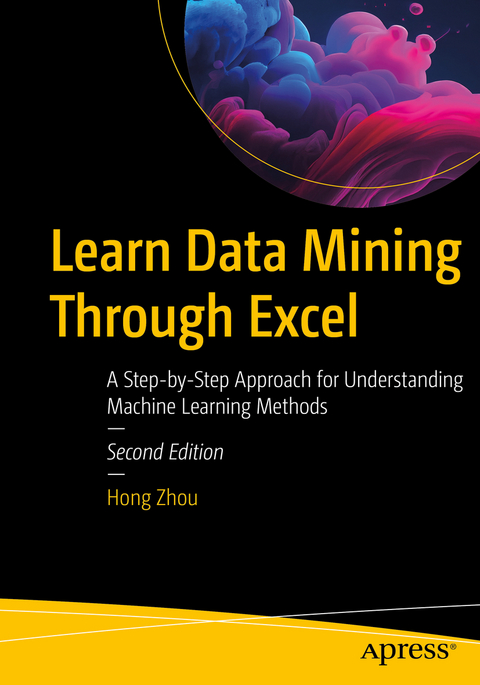
Learn Data Mining Through Excel
Apress (Verlag)
978-1-4842-9770-4 (ISBN)
This updated edition demonstrates how to work with data in a transparent manner using Excel. When you open an Excel file, data is visible immediately and you can work with it directly. You’ll see how to examine intermediate results even as you are still conducting your mining task, offering a deeper understanding of how data is manipulated, and results are obtained. These are critical aspects of the model construction process that are often hidden in software tools and programming language packages.
Over the course of Learn Data Mining Through Excel, you will learn the data mining advantages the application offers when the data sets are not too large. You’ll see how to use Excel’s built-in features to create visual representations of your data, enabling you to present your findings in an accessible format. Author Hong Zhou walks you through each step, offering not only an active learning experience, but teaching you how the mining process works and how to find hidden patterns within the data.
Upon completing this book, you will have a thorough understanding of how to use an application you very likely already have to mine and analyze data, and how to present results in various formats.
What You Will Learn
Comprehend data mining using a visual step-by-step approach
Gain an introduction to the fundamentals of data mining
Implement data mining methods in Excel
Understand machine learning algorithms
Leverage Excel formulas and functions creatively
Obtain hands-on experience with data mining and Excel
Who This Book Is For
Anyone who is interested in learning data mining or machine learning, especially data science visual learners and people skilled in Excel who would like to explore data science topics and/or expand their Excel skills. A basic or beginner level understanding of Excel is recommended.
Hong Zhou, PhD is a professor of computer science and mathematics and has been teaching courses in computer science, data science, mathematics, and informatics at the University of Saint Joseph for nearly 20 years. His research interests include bioinformatics, data mining, software agents, and blockchain. Prior to his current position, he was as a Java developer in Silicon Valley. Dr. Zhou believes that learners can develop a better foundation of data mining models when they visually experience them step-by-step, which is what Excel offers. He has employed Excel in teaching data mining and finds it an effective approach for both data mining learners and educators.
Chapter 1: Excel and Data Mining.- Chapter 2: Linear Regression.- Chapter 3: K-Means Clustering.- Chapter 4: Linear Discriminant Analysis.- Chapter 5: Cross Validation and ROC.- Chapter 6: Logistic Regression.- Chapter 7: K-nearest Neighbors.- Chapter 8: Naïve Bayes Classification.- Chapter 9: Decision Trees.- Chapter 10: Association Analysis.- Chapter 11: Artificial Neural Networks.- Chapter 12: Text Mining.- Chapter 13: Hierarchical Clustering and Dendrogram.- Chapter 14 Exploratory Data Analysis (EDA).- Chapter 15: After Excel.
| Erscheinungsdatum | 04.10.2023 |
|---|---|
| Zusatzinfo | 221 Illustrations, black and white; XI, 288 p. 221 illus. |
| Verlagsort | Berkley |
| Sprache | englisch |
| Maße | 178 x 254 mm |
| Themenwelt | Informatik ► Datenbanken ► Data Warehouse / Data Mining |
| Mathematik / Informatik ► Informatik ► Software Entwicklung | |
| Informatik ► Theorie / Studium ► Künstliche Intelligenz / Robotik | |
| Schlagworte | Clustering • Cross-validation • Data Analysis • Data Classification • Data Mining • decision trees • Excel • Hong Zhou Excel • K-means clustering • linear regresssion • Logistic regression analysis • machine learning • Naive Bayes • Nearest Neighbors • neural network |
| ISBN-10 | 1-4842-9770-9 / 1484297709 |
| ISBN-13 | 978-1-4842-9770-4 / 9781484297704 |
| Zustand | Neuware |
| Informationen gemäß Produktsicherheitsverordnung (GPSR) | |
| Haben Sie eine Frage zum Produkt? |
aus dem Bereich


